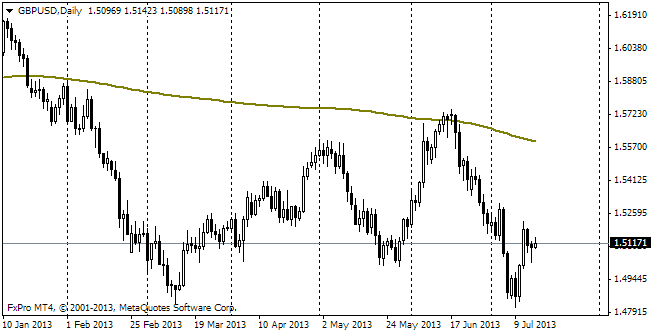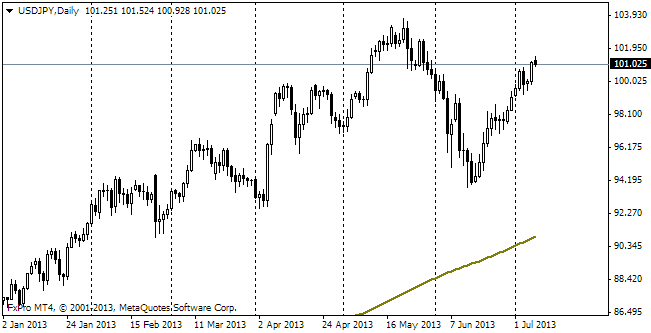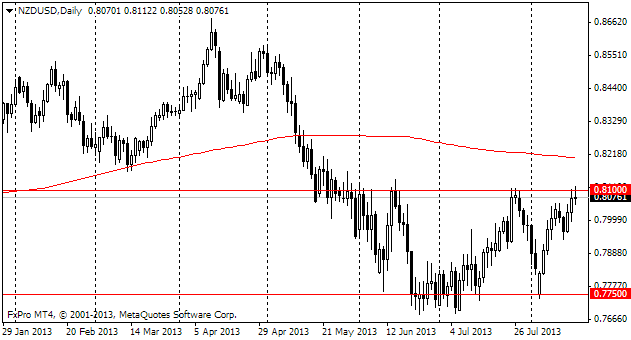EUR/usd
Despite the fact that the currency's depreciation after the drop below its 200-day MA doesn't look swift and impressive, the downward movement still exists. Now the single currency can hardly find any support in the news. At least, in the news of the eurozone. Wednesday's data on the German employment proved to be very poor. Instead of the expected decrease in the number of the unemployed by 14K in May, we saw its growth by 24K. For all that, the unemployment level remained unchanged – 6.7% – the lowest one since the Germany's reunification. Yes, now there is no doubt about Germany's favourable economic data. In the recent months we have doubted that the growth impulse will persist with the appreciated euro and some slowdown in other parts of the world alongside. It seems that finally here it is. Now there is hardly anyone who has doubts that the ECB will ease the monetary policy in the region as there are no factors which could prevent it. The inflation is close to the five-year lows, which not only doesn't stop, but even makes the ECB take action. The main thing is that the rates will be adjusted – lending in the region is still reducing. The decrease in the private sector lending (annually) has been observed for two years. The fresh data showed slowdown of this rate to 1.8% in April against – 2.2% a month before. The major obstacle to easing by the ECB was posed by the strength of Germany's indicators. Now they seem to be less impressive, which makes space for maneuver. Of course, it will take 3-9 months for any of the ECB's measures to take effect in the real economy, but under the condition of cooler statistics, it is much easier to account for the stimulating measures.
GBP/USD
The British currency is under the pressure of all those who hurry to leave the overbought cable. Yesterday's impressive selling occurred for no serious reason. The only news deserving attention was a sudden decrease in the mortgage approvals by the largest banks. The indicator fell from 45K to 42.2K in April, which is the third month of decline for it.

USD/JPY
Despite the fact that performance of usdjpy is not exceptionally good, we can't ignore the multitudes of comments and forecasts in the mass media, promising sharp growth in the coming months. We have nothing to add here, as all of them say exactly the same we do: the BOJ keeps printing money, while the Fed and other CBs in the developed countries are getting ready for the policy toughening, which should return the yen the status of a funding currency.

NZD/USD
The New Zealand currency is under pressure today. Initially the decline was provoked by weakening of the business sentiment indicator. The ANZ Business Confidence keeps decreasing after reaching its 20-year highs in March. The drop below the support of 0.8530 caused triggering of stop losses, which eventually led nzdusd below 0.85, the lowest level for the recent two months and a half.
